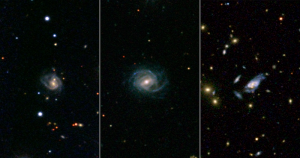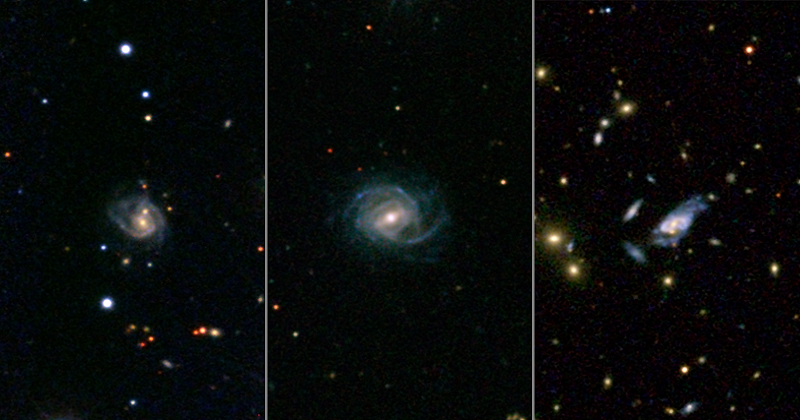
NASA Astronomers Discover Colossal ‘Super Spiral’ Galaxies
A new kind of galactic beast, furiously producing new stars and shining very bright, has been spotted in space. A group of scientists have found a previously unrecognized class of super spiral galaxies, dubbed super spirals, using archived NASA data. These unprecedented galaxies dwarf our own spiral galaxy, the Milky Way, and compete in size and brightness with the largest galaxies in the universe, NASA said.

Bizarrely, information about these strange super-sized galaxies was buried unnoticed in an archive of 100 million galaxies maintained by Nasa and Caltech. Super spirals have apparently been hidden in plain sight as they look very similar to traditional spiral galaxies. Now a new study using archived Nasa data reveals these seemingly nearby objects are in fact distant, gigantic, behemoth versions of everyday spirals. Even the closest galaxy was 1.2 billion light years away.
“We have found a previously unrecognised class of spiral galaxies that are as luminous and massive as the biggest, brightest galaxies we know of,” said Patrick Ogle, an astrophysicist at the Infrared Processing and Analysis Center (IPAC) at the California Institute of Technology in Pasadena and lead author of a new paper on the findings published in The Astrophysical Journal. “It’s as if we have just discovered a new land animal stomping around that is the size of an elephant but had shockingly gone unnoticed by zoologists.”
These new galaxies shine with anywhere between eight and 14 times the brightness of our own galaxy – Milky Way. They possess as much as ten times our galaxy’s mass and the largest super-spiral has a width of 440 000 light-years. Their gleaming, starry disks stretch from twice to even four times the width of the Milky Way, approximately 100,000 light-year-wide disk.
“A vital hint about the potential origin of super spirals is that four out of the 53 seen by Ogle and colleagues clearly contain two galactic nuclei, instead of just one as usual. Double nuclei, which look like two egg yolks frying in a pan, are a telltale sign of two galaxies having just merged together,” NASA added.
“Super spirals could fundamentally change our understanding of the formation and evolution of the most massive galaxies,” said Ogle. “We have much to learn from these newly identified, galactic leviathans.”